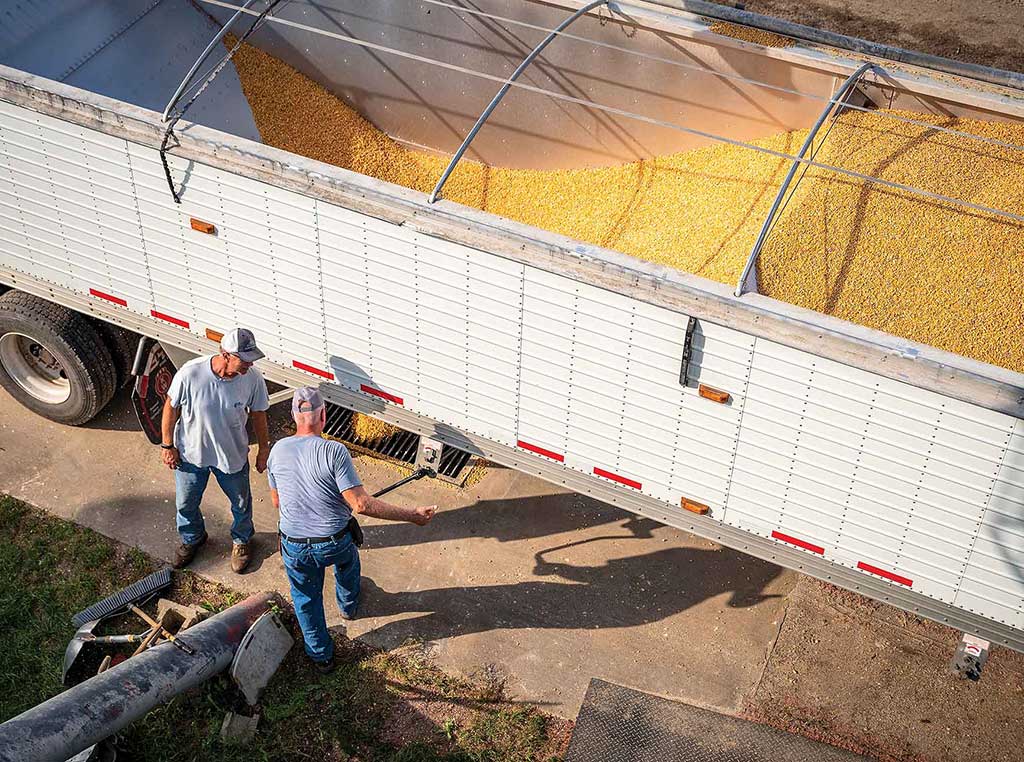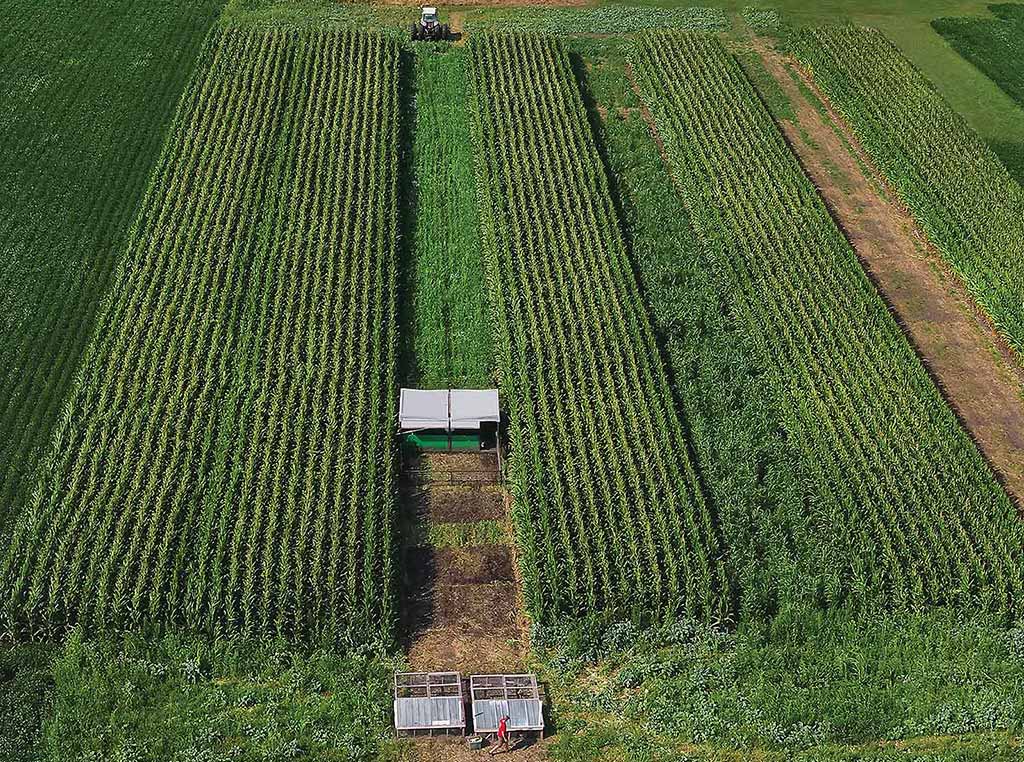
Central Illinois farmers Mark Read and Phil Zimmerman unload high-moisture corn.
Agriculture, Farm Operation June 01, 2021
Keeping Command Of Each Kernel
Managing grain quality during drying and storage.
You spend a great deal of time growing the perfect plant. Are you doing enough to keep your harvested grain in its best condition?
Dr. Kent Rausch, University of Illinois ag engineering associate professor, opened his presentation during a recent Grain Handling Safety Coalition webinar with a rather blunt truth about harvested grain: “The quality cannot go up.”
“Your job is to maintain that quality by controlling the moisture, temperature, and biological activity going on in the bin,” he said next.
His bottom line: the better you do these three things, the better chance you will have to market your grain at the highest possible price.
“The notion of a safe storage moisture is really a misuse of the word safe. What we’re really talking about is the drier the grain, the more time it buys you before having to market it. Drying to 15.5 percent is fine, but if the moisture is lower, the allowable storage time increases dramatically.” Dr. Rausch explains this could be the difference between holding grain until the summer compared to only January.
His advice is to give yourself the flexibility in the fall, “and if your equipment doesn’t allow for that, it may be time to add another dryer or a better dryer.”
Researchers also recommend “coring” bins soon after harvest. “This practice is a very good low-tech, low-investment way of getting the grain ready for long-term storage,” says Rausch.
Getting good quality grain in the bin is only part of the equation, though.
Once it is in the bin, it needs to be monitored and aerated regularly to ensure high moisture spots do not eventually become trouble spots. You know this. Farmers do this relatively well just by feel, so why dedicate two pages to the topic?
We are at a “collision of growth,” according to Dr. Salah Issa, who is also an assistant professor in the University of Illinois’ ag engineering department. His research shows corn production, on-farm storage, bin size—and entrapments—are all increasing.
As a result, it may be time to reevaluate the way you have always managed your bins to keep your grain in good condition and, most importantly, keep yourself safe.
“It’s really a matter of putting into practice the kind of research we’ve done for years,” says Dr. Dirk Maier, Iowa State University ag engineering professor.
“A farmer should never have to enter a bin. We have the equipment and technologies available to proactively monitor and manage stored grain remotely.”
One of the newest technologies available relies on carbon dioxide monitoring, which research is proving to be an earlier indicator of issues than spiking temperature or moisture levels.
A new, cable-free CO2 monitor is available from Amber Ag that also can be programmed to run fans at the most optimal times.
“It’s tricky to catch the right air at the right time. Our tech helps farmers perform aeration better and alerts them when grain begins to tip out of spec,” says Lucas Frye, Amber’s co-founder.

Jon Griffen manually checks how full the wet bin is.
Read More

Agriculture, Sustainability
Maui Makeover
Hawaiian paradise is focused on real world challenge of food production.

AGRICULTURE, FARM OPERATION
Nose-till
Innovative system allows corn, cover crops, and livestock to share the field simultaneously.
